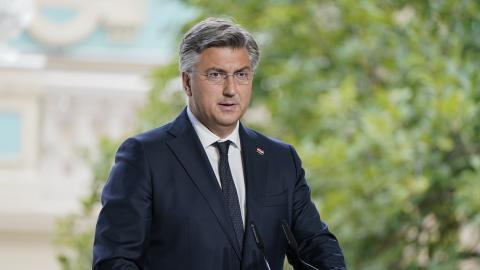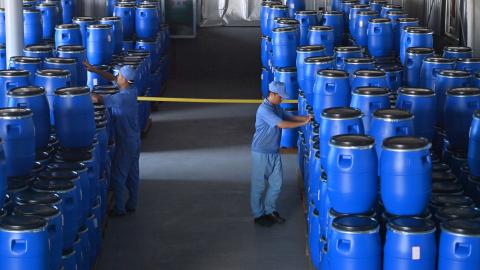If you think monetary policy is getting boring, think again. True, Fed chair Janet Yellen had no surprises for us earlier this week. To contain the 2008 financial crisis, the Fed printed more than one trillion new dollars to finance its purchase of the assets that it now plans to sell. That took its balance sheet to $4.5 trillion, previously unknown territory. The Fed will very slowly whittle that down, initially by not replacing $10 billion of expiring assets such as mortgages and government bonds every month, with that figure to increase by $10 billion each quarter to a ceiling of $50 billion per month. Slow and steady wins the race to keep markets from over-reacting.
No worry. Markets discounted that winding-down process long ago. They are also unperturbed by the Fed’s plan to increase interest rates in very tiny steps, perhaps one quarter of a percentage point two or three times per year, to settle at 2.75 percent (a revision of the original target of 3 percent), compared with the current rate of 1.25 percent. James McCann of Aberdeen Asset Management sees Yellen & Co.’s plans as a good sign: “This step reflects rising confidence that the recovery is sufficiently durable to withstand a slow withdrawal of emergency policy measures …”
Because the inflation measure the Fed uses remains well below its target of 2 percent, these rate increases represent a de facto abandonment of that long-held target, replaced perhaps by the 1.5 percent rate some economists now advocate. That would be a big deal, allowing the Fed to raise rates not because it fears inflation but because, well, because it thinks it should. If you can’t hit your target, change the target, seems to be the new theory.
So far, so relaxing.
Enter David Rosenberg, well-regarded chief economist and strategist at money managers Gluskin Sheff, and one of the first Wall Street analysts to turn bearish (pessimistic) in 2008. He points out that since 1950 there have been 13 Fed tightening cycles, periods in which the central bank raised interest rates, and ten of them have resulted in a recession. The other three times, the Fed quickly reversed policy. So “We will probably have a recession next year,” Says Rosenberg.
Or sooner or later. Larry Summers, Secretary of the Treasury for President Clinton (Bill, that is) and Barack Obama’s chief economic advisor, has been arguing that we are in a period of “secular stagnation,” one afflicted by a chronic shortage of demand and investment opportunities, sustained only by unsustainable financial conditions such as our runaway stock market. Hardly the time to raise interest rates, even a little, or begin shrinking the Fed balance sheet. Or so it seems to Summers and others who already see signs of slowing because of weak demand: Ford announced a few days ago that it is idling production lines at five plants, three in the United States, to cope with falling sales.
Not to worry. Even if the Fed’s moves create a drag on the economy, President Trump and Congress will have offset that by passing a massive tax reform package, or at least significant tax cuts. Unless, as with health care, the White House and Republicans in Congress can’t agree on any such package, in this instance because the party’s deficit hawks (most notably the Freedom Caucus) say they won’t vote for anything that increases the deficit, even if that increase is smothered in a large dollop of accounting fudge.
Which is what Trump is planning to do. He and a majority of Republicans say tax cuts will produce enough increased economic activity and tax revenues to “pay for themselves.” That will depend on the magnitude of the reductions—Trump wants the corporate rate reduced from 39 percent (the statutory level; the actual paid-in level after deductions is closer to 28 percent) to 15 percent. But tax drafters in the House are shooting for something like 23 percent to avoid drowning the country in red ink, rather than merely drizzling the stuff over the nation’s ledgers.
Meanwhile, the president’s new best friends—Democratic House and Senate leaders recently shared Chinese takeout with the president at the White House, presumably using their own very long spoons—might very well show their gratitude for the feast by refusing to support lower taxes on the stated grounds that too much of the benefit would go to “the rich,” which Trump has promised will not be the case. The fact that failure to push through tax cuts would send Republicans into the 2018 elections with nothing to show for their control of both houses of Congress and the White House has not gone unnoticed by the no-longer loyal opposition.
There are tax cuts and there are tax cuts. Reductions in personal rates are likely to stimulate demand for goods, which secular stagnationists say is just what we need. But statistical and anecdotal evidence suggest we are so short of workers with the necessary skills that the economy is unable to produce any more goods to respond to higher demand. If that is true, putting more money in consumers’ pockets won’t do much to stimulate economic activity and raise the growth rate.
Reductions in corporate rates might be more growth-inducing by increasing companies’ incentives to expand productive capacity. But with Congress’s approval rating at 16 percent, according to Gallup pollsters—the president’s is more than twice as high, although still a relatively low 40 percent—and the 2018 election campaign already underway, Congress is likely to give greater weight to personal as opposed to corporate tax cuts than economists deem desirable.
If they agree on any tax cuts at all. After all, the economy grew at an annual rate of 3 percent in the most recent quarter; by almost any reasonable definition we have full employment; and wages are rising at the fastest pace since the turn of the century. That is the case against cutting taxes—indeed, for raising them to support the expanded entitlement system willed to Trump by Obama, and the parlous state of our cash-starved military.
If Trump doesn’t get all of the growth-inducing tax cuts he is demanding, and he probably won’t, there is always the infrastructure program, now more attractive than ever if new studies are right. They show government spending has a multiplier effect on economic growth—double the wallop of the dollars spent to increase the economy’s productive efficiency by improving airports, roads, and the like. The theory is that construction and other workers will troop into their butchers, bakers, and gadget-makers with new cash to spend.
This sort of government spending appeals to Democrats. But Trump has a different wrinkle on the old idea. He is hoping that a bit of government investment will stimulate private-sector players to carry most of the financial burden of rebuilding roads, airports, and other facilities in return for user fees.
So here’s where we stand. The Fed’s tightening after a period of full-speed ahead money-printing, and might not stifle growth because it is so gradual and has been anticipated. Unless, as in the past, it causes a recession. Tax cuts might stimulate growth, most likely at the expense of rising deficits, which will be paid for by younger people who are already not doing as well as their parents did at the same stage of life. But the bill won’t come due until after the elections, so why worry?

















